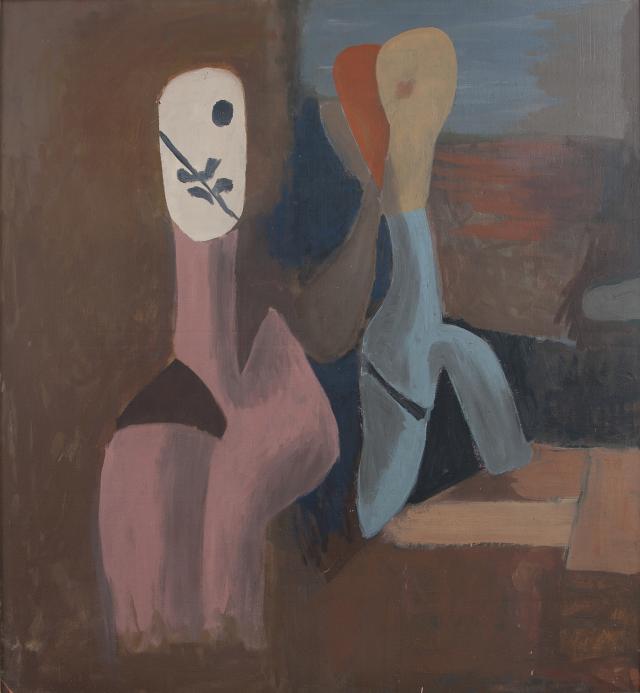Presented during the retrospective that the Aargauer Kunsthaus dedicated to the artist in 2016, these three paintings are later works of Karl Ballmer, which were still showing the influence of his formative years among the Hamburg avant-garde of the 1920s and 1930s.
Even before becoming a member of the Hamburg Secession in 1929, Ballmer regularly visited the group’s annual exhibitions, which also showcased recent art trends, presenting works by the most important modern artists of the time (like Paul Klee, Pablo Picasso, Wassily Kandinsky, Giorgio De Chirico and Georges Braque). In the late 1920s, Ballmer counted among the young painters who were developing a new pictorial language under the influence of Edvard Munch’s work.
Characterized by a limited set of colors often dominated by blues and greys, his compositions were like brief summaries of characters and landscapes with rounded contours.
Half-figures, half-objects, oscillating between flat shapes and volumes, the characters in Zwei Paradiesfiguren (Two paradise figures) converse with reserve. Distinguished by high condensation, they seem to be detaching from the pictorial space while also merging with their environment, embodying hybrid beings whose materiality is slipping away.
Even before becoming a member of the Hamburg Secession in 1929, Ballmer regularly visited the group’s annual exhibitions, which also showcased recent art trends, presenting works by the most important modern artists of the time (like Paul Klee, Pablo Picasso, Wassily Kandinsky, Giorgio De Chirico and Georges Braque). In the late 1920s, Ballmer counted among the young painters who were developing a new pictorial language under the influence of Edvard Munch’s work.
Characterized by a limited set of colors often dominated by blues and greys, his compositions were like brief summaries of characters and landscapes with rounded contours.
Half-figures, half-objects, oscillating between flat shapes and volumes, the characters in Zwei Paradiesfiguren (Two paradise figures) converse with reserve. Distinguished by high condensation, they seem to be detaching from the pictorial space while also merging with their environment, embodying hybrid beings whose materiality is slipping away.
